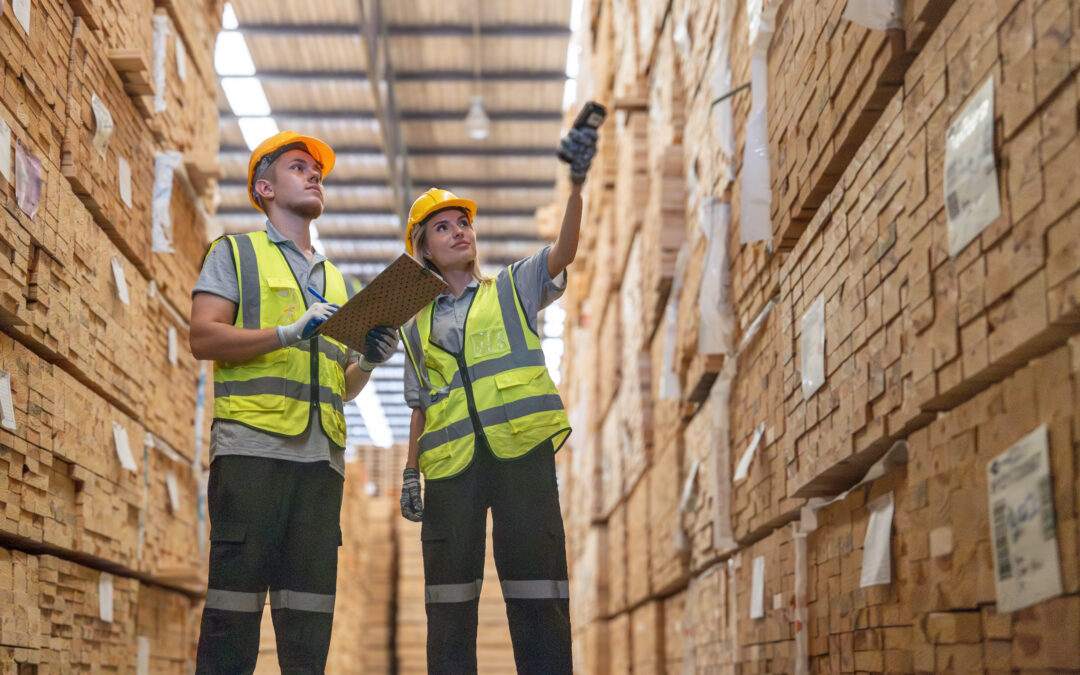Introduction: The Importance of Supplier Tracking in the Modern Supply Chain
In today’s rapidly evolving global economy, supply chain visibility has become essential for businesses looking to stay ahead of disruptions, meet customer expectations, and build resilient operations. Whether you’re a large multinational or a small business, the importance of understanding and monitoring your suppliers—both Tier 1 and Tier 2—cannot be overstated.
The modern supply chain is no longer linear or straightforward. With an increasing number of touchpoints, global disruptions, and heightened expectations for ethical sourcing, businesses must adopt a multi-tier approach to procurement. By effectively tracking Tier 1 and Tier 2 suppliers, companies gain deeper insights into their entire supply network, helping them mitigate risks, improve operational efficiency, and strengthen relationships with key vendors.
Understanding Tier 1 and Tier 2 Suppliers
Before diving into the benefits and strategies of supplier tracking, it’s crucial to understand the distinction between Tier 1 and Tier 2 suppliers.
-
Tier 1 Suppliers are the direct suppliers with whom companies maintain contracts and relationships. They provide raw materials, components, or services that go directly into a product or service offering. These suppliers often have long-term contracts, and the relationship is managed closely through purchase orders, service agreements, and performance evaluations.
-
Tier 2 Suppliers, on the other hand, are the suppliers of your Tier 1 vendors. They provide the components, materials, or services that Tier 1 suppliers need to meet their obligations to you. While businesses may not have direct contact with Tier 2 suppliers, their performance still has a significant impact on the overall supply chain.
Why Supplier Tracking is Critical to Business Success
Tracking both Tier 1 and Tier 2 suppliers offers numerous benefits, from improved operational efficiency to enhanced risk management. As supply chains grow more complex, businesses that maintain visibility at multiple tiers are more likely to avoid disruptions and manage risks effectively. Here’s why supplier tracking is a strategic advantage:
-
Enhanced Risk Mitigation: Supplier tracking allows companies to identify potential risks earlier in the supply chain, from natural disasters to geopolitical issues, and take corrective actions before they escalate.
-
Improved Compliance: Tracking suppliers ensures businesses stay compliant with industry regulations, environmental standards, and corporate social responsibility (CSR) mandates.
-
Increased Transparency: Full visibility into your supply chain helps build trust with customers and investors by showing that you’re actively managing suppliers and addressing potential issues.
-
Cost Savings: Monitoring Tier 1 and Tier 2 suppliers helps businesses identify inefficiencies, reduce bottlenecks, and negotiate better pricing, which can lead to significant cost savings.
-
Stronger Supplier Relationships: Keeping track of vendor performance and addressing issues proactively builds stronger, more collaborative partnerships with suppliers, ensuring better long-term outcomes for all parties.

Take Control of
Supplier Compliance
Never miss a certification expiration again with
automated alerts and reminders.
Key Differences Between Tier 1 and Tier 2 Supplier Tracking
The approach to tracking suppliers in different tiers will vary significantly. Here’s a breakdown of the key differences between Tier 1 and Tier 2 supplier tracking:
-
Level of Engagement:
-
Tier 1 suppliers have direct contracts with the business, making them a top priority for regular monitoring and performance assessments.
-
Tier 2 suppliers are typically less visible but still crucial to the supply chain. Companies must rely on Tier 1 suppliers to disclose information about their Tier 2 relationships and performance.
-
-
Visibility:
-
Tier 1 suppliers are fully integrated into a company’s systems, such as ERP (Enterprise Resource Planning), allowing easy tracking and monitoring.
-
Tier 2 visibility is more difficult and often requires third-party tools or manual mapping through collaboration with Tier 1 suppliers.
-
-
Risk Exposure:
-
Tier 1 suppliers are directly responsible for any disruptions in the supply chain. Monitoring them is vital to ensure that products or services are delivered as agreed.
-
Tier 2 supplier performance, although indirect, can cause upstream problems such as raw material shortages, compliance issues, or price fluctuations that affect Tier 1.
-
-
Technology Integration:
-
Tier 1 suppliers are typically connected via EDI (Electronic Data Interchange), supplier portals, or other systems that integrate with the business’s ERP system.
-
Tier 2 suppliers may not have the same level of connectivity, and companies may need to use innovative technologies like blockchain or custom integrations for real-time tracking.
-
Benefits of Tier 1 Supplier Tracking
Monitoring Tier 1 suppliers ensures that the immediate supply chain operates efficiently. Here’s how tracking Tier 1 suppliers can benefit your business:
-
Improved Delivery Performance: Regular monitoring of Tier 1 suppliers helps identify any potential delays early, enabling businesses to take corrective actions before they affect the overall supply chain.
-
Consistent Product Quality: By tracking Tier 1 suppliers, businesses can ensure that products meet the required quality standards and minimize defects or quality issues.
-
Regulatory Compliance: Procurement software that tracks Tier 1 suppliers helps businesses ensure that their operations meet industry regulations, from ISO certification to environmental standards.
-
Supplier Relationship Management: Effective supplier management fosters collaboration and allows businesses to optimize costs through long-term partnerships.
Benefits of Tier 2 Supplier Tracking
While tracking Tier 2 suppliers is more complex, the benefits of doing so are undeniable:
-
Enhanced Risk Mitigation: Monitoring Tier 2 suppliers helps businesses identify potential risks early, including raw material shortages, compliance issues, and supply chain disruptions.
-
Improved Sustainability: Tracking Tier 2 suppliers ensures compliance with sustainability initiatives, including ethical sourcing, waste reduction, and carbon footprint monitoring.
-
Cost Optimization: By monitoring Tier 2 suppliers, companies can optimize purchasing and reduce costs by eliminating inefficiencies and negotiating better pricing.
-
Business Continuity Planning: A proactive approach to tracking Tier 2 suppliers ensures that businesses are prepared to handle disruptions quickly and effectively.
-
Greater Transparency: Transparency in Tier 2 supply chains helps businesses ensure that they meet ESG (Environmental, Social, and Governance) standards, build trust with stakeholders, and maintain a positive public image.

Manage Multi-Vendor
Procurement at Scale
Effortlessly handle procurement
across various tiers and vendors.
Technology Tools for Multi-Tier Supplier Tracking
In today’s digital landscape, various tools and technologies help businesses track suppliers across multiple tiers. Below are some of the leading tools that assist in multi-tier supplier management:
-
SAP Ariba: SAP Ariba offers a robust platform for managing procurement, supplier collaboration, and spend analysis. It enables businesses to track suppliers at multiple tiers, providing insights into performance, cost, and compliance.
-
Resilinc: Resilinc offers advanced supply chain risk management capabilities, allowing businesses to monitor and track supplier performance and risks across all tiers.
-
Jaggaer: Jaggaer provides a suite of tools for end-to-end supplier lifecycle management, including supplier evaluation, procurement automation, and supplier performance monitoring.
-
IBM Blockchain: IBM’s blockchain platform ensures tamper-proof visibility and traceability for multi-tier supply chains, offering a secure way to monitor and audit transactions across the supply chain.
-
Coupa: Coupa offers procurement solutions that provide spend visibility and supplier performance tracking, enabling businesses to optimize procurement processes across multiple tiers.
Best Practices for Effective Supplier Tier Management
To optimize supplier tracking across Tier 1 and Tier 2 suppliers, consider implementing these best practices:
-
Map the Entire Supply Chain: Start by asking your Tier 1 vendors to disclose their suppliers. This will help you create a comprehensive visual map of your supply network.
-
Monitor Key Performance Indicators (KPIs): Track critical metrics such as lead times, on-time delivery, and contract compliance for both Tier 1 and Tier 2 suppliers.
-
Audit Tier 2 Suppliers Periodically: Conduct regular audits of Tier 2 suppliers or require them to share certifications (e.g., ISO 9001, Sedex membership) to ensure compliance with ethical and regulatory standards.
-
Build Strong Supplier Relationships: Communication and collaboration are key to managing suppliers effectively. Share forecasts, performance goals, and technology roadmaps to improve supplier collaboration.
-
Use Predictive Analytics: Leverage artificial intelligence and machine learning tools to anticipate potential risks such as supply chain disruptions, price fluctuations, and geopolitical issues.
-
Secure Supply Contracts: Ensure that Tier 2 supplier visibility is incorporated into contracts, and that vendors support your business during disruptions.
Conclusion: Supply Chain Visibility Begins with Supplier Tracking
Tracking Tier 1 and Tier 2 suppliers is no longer just a smart practice—it’s a business necessity. In today’s increasingly complex global economy, businesses that understand and monitor their entire supply chain landscape are more resilient to disruptions, compliant with regulations, and aligned with stakeholder expectations.
By leveraging technology, maintaining strong supplier relationships, and using best practices for tracking, businesses can reduce risk, improve transparency, and ultimately drive long-term success in their procurement strategies. Whether you’re in the automotive, pharmaceutical, retail, or any other industry, it’s crucial to recognize the value of Tier 1 and Tier 2 supplier tracking and make it an integral part of your supply chain management strategy.




